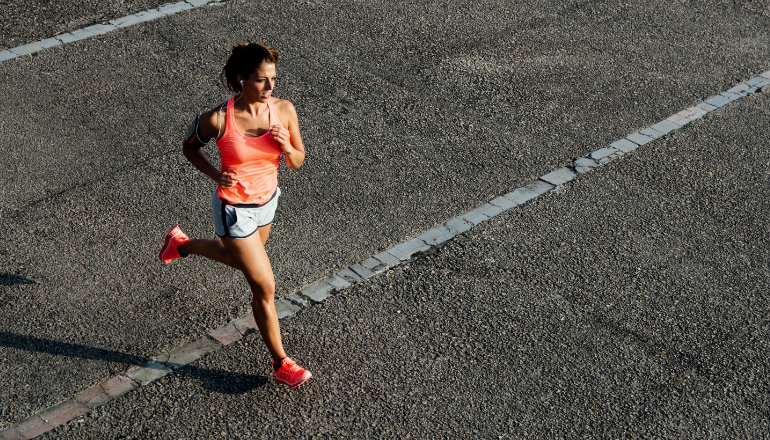 Reading Time: 7 minutes
Reading Time: 7 minutes“Give me six hours to chop down a tree and I will spend the first four sharpening the axe.” – Abraham Lincoln
There’s an old adage that says luck favors the prepared. Yet, in our modern culture of instant gratification, the preparation mantra doesn’t always seem to resonate. We want results and we want them now. And while discovering your true talents and passion will have a big impact on the outcome you achieve in any endeavor, preparation is what will make or break you. In truth, success lies somewhere near the intersection of talent, hard work, and preparation.
When it comes to sport and fitness, preparation isn’t just an essential element of getting results — it can also mean the difference between health and injury. If your goal is a lifetime of fitness and health, then you need to prioritize preparation so you can exercise intelligently.
Here are what I call the “Six Degrees of Preparation” when it comes to your efforts in sport and fitness.
1. Never Skip the Warm-up
I was a foolhardy twenty-something who constantly pushed, played hard, and lifted heavy. I fell into the trap of infinite growth through fitness and the allure of bigger, faster, stronger — all the while doing so without ever properly warming up. I just kept pushing harder and harder. I thought I was indestructible.
That is until age 26, when I tore my rotator cuff. Prior to my injury, I hadn’t given warming up much thought. “Why warm up when time is limited and you need to train hard for results?” was my thought process.
While time is indeed limited, the fact of the matter is that injury will result from this approach. I learned that the hard way. And if you’ve ever watched or participated in adult softball leagues, you know what I am talking about. You’ve likely seen the inevitable torn hamstring in that 35-year-old guy sprinting around second base — who fifteen minutes before the game was in a suit and tie.
The bottom line: If you don’t have time for a thorough and proper warm-up, then you don’t have time to train/play.
2. Make a List (and Check It Twice)
Consider your training variables and make adaptations. There are four important variables when it comes down to your training:
- Exercise selection – which exercises you do
- Volume — the number of sets and reps in your workout
- Density — how much work you do within a given amount of time
- Intensity — how hard you are working
Assuming you train/play for results, this list should be like your training bible. The challenge is that humans are creatures of habit and tend to do the same things over and over again. While the most important aspect in reaching a goal is putting in work, growth occurs from breaking the cycle.
So you must find ways to force yourself out of your routine and exercise intelligently in order to avoid the inevitable training plateau. If you are looking for ideas as to how and when, your body usually gives the best clues. Learn to listen for what it does and doesn’t respond to in a positive way.
The bottom line: For best results, vary your training platform with the seasons, literally and figuratively.
3. Gear Matters
I can’t tell you how many times I’ve had participants in a bootcamp, HIIT class, or boxing class complain of impact-related pain while wearing shoes with soles completely worn thin. If you train at any level, you must have the right gear and maintain it well. If you can afford a gym membership, softball league fees, or MMA school monthly dues, then you can afford to maintain and replace your gear.
The bottom line: Check your gear often and replace anything worn out, frayed, or torn.
4. Remember to Train Flexibility
To many, fitness comes down to two options: cardio and weights. This is because of the perception of the correlating results. Cardio burns calories and makes you faster, while strength training makes you stronger and more defined, and building muscle even helps metabolically, as well. Many people falsely assume flexibility does not directly correlate with any tangible results. But this is not true. First, flexibility can absolutely will help you achieve a greater athletic result — try kicking over your head without flexible hips or throwing a ball fifty feet without flexible shoulders.
That said, scientific literature is inconclusive as to when and how to stretch. But according to the Mayo Clinic, “Although studies about the benefits of stretching are mixed, stretching may help you improve your joint range of motion, which in turn may help improve your athletic performance and decrease your risk of injury.”
One additional thing that is interesting is the concept of long-term range of motion. While muscles will atrophy and cardiovascular capacity diminishes with age, flexibility does not necessarily follow suit as long as you train for it.
The bottom line: While flexibility training might not help you get a hard body, it may help you perform better and prevent injury. It may also help you maintain the ability to bend over and tie your shoes when you’re eighty.
5. Don’t Forget to Cool Down
The even more overlooked cousin of the warm-up is the cool-down. While it’s a pervasive myth that cooling down prevents muscle soreness, cooling down does have a place in your training regimen. Specifically, heart rate adaptations and blood flow are affected when you exercise vigorously. If and when you suddenly stop exercising, blood can pool in your lower extremities and cause dizziness and/or fainting. In trained athletes, this is even more of a risk as well-conditioned individuals tend to experience more efficient and quicker heart rate recovery.
Furthermore, when you take the time to connect to your breath and be mindful post exercise, you set the tone for the rest of your day. I find that even a few minutes of walking, stretching, and deep breathing is almost a mini meditation that prepares me for going back into my normal life.
The bottom line: While cooling down may seem like a waste of time, those minutes at the end of your workout matter in terms of health and mindfulness. In yoga, it’s widely considered that savasana is the most important pose of your practice. Having a plan means being prepared not just for how you start and execute your workout, but how you finish, as well.
6. Rest Well
As many professional and competitive athletes know, having a plan for your rest days is important. Studies show that recovery from training is vital on a cellular level (getting your body to its optimal level of balance), on a physiological level (for things like heart and blood pressure health), and on an energy level (replenishing and repairing your muscle tissue).
Recovery is also an important factor psychologically in preventing burn out and staying mentally focused. In both untrained and trained individuals, one to two days of recovery is optimal depending on factors of intensity, duration, and specificity.
The bottom line: The phrase “work hard, play hard” approach misses an important element — resting well. A vital part of performing at your best and feeling your best means planning for proper rest, sleep, and making the most of your off days.
The Real Bottom Line: Prepare to Succeed
Admittedly, it’s more fun to execute versus plan and it’s more fun to play versus prepare. But in fitness (and in life), how you prepare has everything to do with how you’ll perform.
Ultimately, luck may or may not favor the prepared. Luck after all, is…luck! But more important than luck is the result. Whether you meet your goals and whether you stay healthy on your journey has as much to do with preparing well as it does putting in your work.













